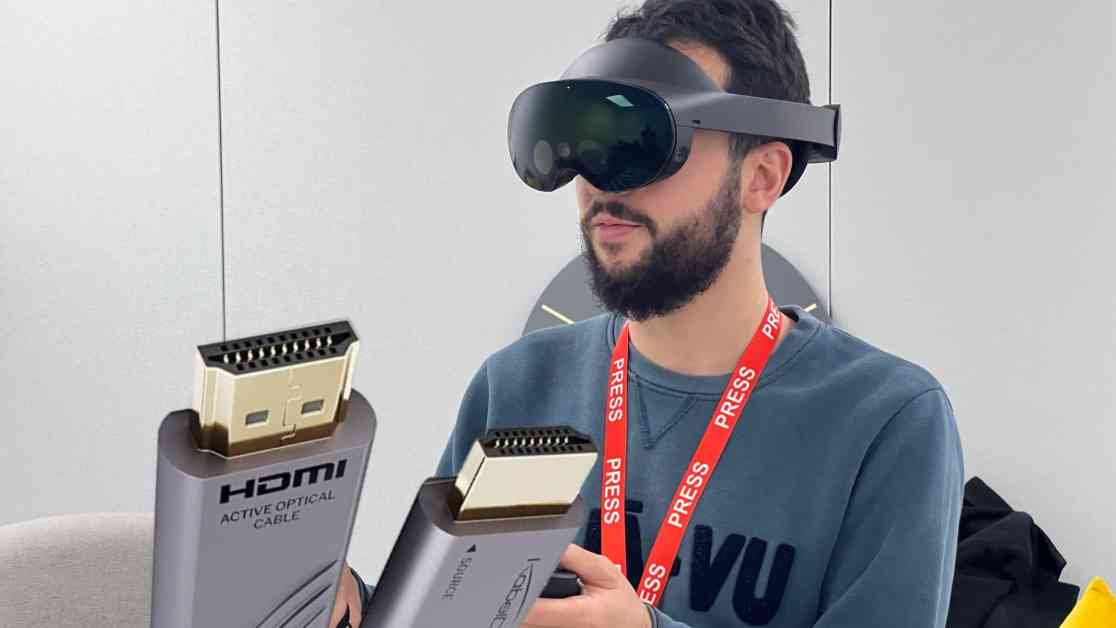Meta Quest HDMI Link: Enhancing Virtual Reality Experience with Connectivity Options
Virtual reality (VR) technology has long been hailed as the future of immersive experiences, offering users the ability to transport themselves to different worlds and engage with content in new and exciting ways. However, despite the efforts of major players in the industry such as Meta, Apple, Sony, and HTC, VR has yet to find its « killer feature » that truly revolutionizes the way we interact with technology.
One of the primary uses of VR headsets is for viewing videos, and Meta is well aware of this trend. In a blog post dated August 15th, the company announced that its VR headsets, including the Quest 2, Quest 3, and Quest Pro, would now be compatible with devices featuring an HDMI output. However, there is a catch – users will need to purchase a video capture card to connect the headset via HDMI.
The Quest line of VR headsets from Meta already allows users to connect to a PC for gaming in virtual reality. While this feature is limited to VR games, the overall experience is dependent on the headset’s operating system and available applications. With the Meta Quest HDMI Link application, the company aims to take this connectivity a step further by enabling users to view live HDMI content from devices such as gaming consoles, computers, or set-top boxes directly on their Meta Quest headset. Essentially, the VR headset transforms into a screen like any other, even when worn on the head.
The challenge arises when attempting to connect an HDMI cable to the Quest headset, which only features a USB-C port. Surprisingly, a simple USB-C to HDMI cable is not sufficient. Meta requires users to purchase a HDMI capture card with a USB-C output, which can then be connected to the headset. These capture cards are readily available on platforms like Amazon for around twenty euros.
Once the adapter is connected to the headset, it will stream the HDMI device’s content in 1080p at 30 frames per second with no latency. This setup allows users to seamlessly connect devices like a PlayStation 5, Nintendo Switch, or set-top box to their Meta Quest headset. Meta recommends purchasing a capture card with a USB-C input to enable simultaneous charging of the headset while in use.
The Battle of Content: Meta vs. Apple
Meta’s decision to incorporate an HDMI port in its VR headsets may seem unconventional for a product designed to embody freedom. In contrast, Apple’s Vision Pro headset lacks a USB-C port and relies solely on magnetic charging, with no option for external connections. Apple boasts a vast array of applications on its platform, while Meta lacks native streaming services.
Despite the innovative approach to connectivity, it is surprising that Meta does not offer an official accessory for this purpose. While using a capture card makes sense, providing an official option would eliminate potential compatibility issues. Other VR manufacturers like Xreal and HTC offer accessories for connecting smartphones via cables, catering to different user preferences.
In Conclusion
The integration of the Meta Quest HDMI Link application and the use of capture cards to connect VR headsets to HDMI devices represent a significant step towards enhancing the overall VR experience. By enabling users to access a wider range of content and devices, Meta is striving to make VR more versatile and appealing to a broader audience.
As the VR industry continues to evolve and innovate, the importance of seamless connectivity and compatibility with external devices cannot be overstated. Meta’s initiative to bridge the gap between VR headsets and HDMI devices is a testament to the company’s commitment to pushing the boundaries of technology and creating more immersive experiences for users.
With the right tools and accessories, such as HDMI capture cards, users can unlock new possibilities and explore the full potential of VR technology. As the industry continues to mature, we can expect to see further advancements in connectivity and content delivery, ultimately shaping the future of virtual reality.

